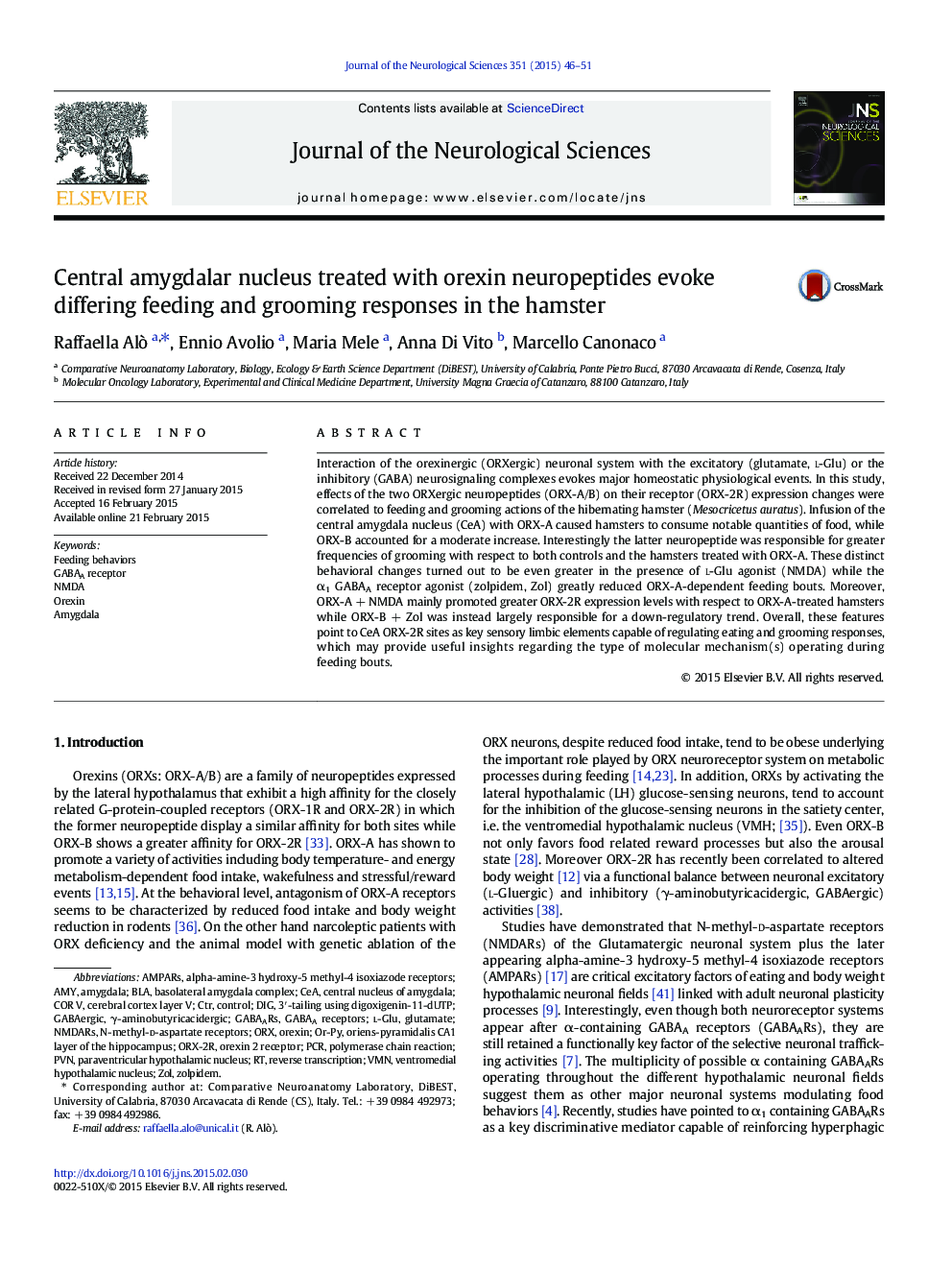| کد مقاله | کد نشریه | سال انتشار | مقاله انگلیسی | نسخه تمام متن |
|---|---|---|---|---|
| 1913250 | 1535111 | 2015 | 6 صفحه PDF | دانلود رایگان |

• Hamster CeA infusion with ORX-A/-B increased food consumption.
• Treatment with ORX-B modified grooming responses.
• NMDA/zolpidem + ORX-A evoked still greater or lower feeding behaviors.
• ORX-2R mRNA levels in most limbic areas were correlated to such behaviors.
• CeAORX-2Rs represent a major on/off feeding/grooming switch in hibernators.
Interaction of the orexinergic (ORXergic) neuronal system with the excitatory (glutamate, l-Glu) or the inhibitory (GABA) neurosignaling complexes evokes major homeostatic physiological events. In this study, effects of the two ORXergic neuropeptides (ORX-A/B) on their receptor (ORX-2R) expression changes were correlated to feeding and grooming actions of the hibernating hamster (Mesocricetus auratus). Infusion of the central amygdala nucleus (CeA) with ORX-A caused hamsters to consume notable quantities of food, while ORX-B accounted for a moderate increase. Interestingly the latter neuropeptide was responsible for greater frequencies of grooming with respect to both controls and the hamsters treated with ORX-A. These distinct behavioral changes turned out to be even greater in the presence of l-Glu agonist (NMDA) while the α1 GABAA receptor agonist (zolpidem, Zol) greatly reduced ORX-A-dependent feeding bouts. Moreover, ORX-A + NMDA mainly promoted greater ORX-2R expression levels with respect to ORX-A-treated hamsters while ORX-B + Zol was instead largely responsible for a down-regulatory trend. Overall, these features point to CeA ORX-2R sites as key sensory limbic elements capable of regulating eating and grooming responses, which may provide useful insights regarding the type of molecular mechanism(s) operating during feeding bouts.
Journal: Journal of the Neurological Sciences - Volume 351, Issues 1–2, 15 April 2015, Pages 46–51